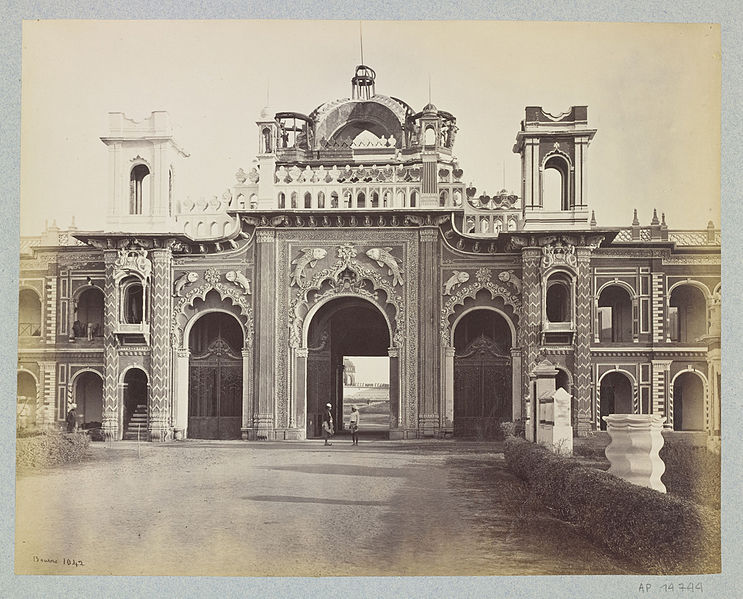“Bajeecha-e-atfal hai duniya mere aage
Hota hai shab-o-roz tamasha mere aage”
This sher of Ghalib is the perfect representation of the beautiful architectures of Lucknow. The giant architectures around Lucknow along with residential and isolated areas are the silent observers of change with passing time. They have seen all the changes silently as they played the role of parents for different generations. The architectures have been a great source of inspirations for artist, writers, craftsmen, musicians and dancers of the city.
Lucknow is considered as one of the paramount cities of India, and is really appreciable for its beauty, culture, tehzeeb, food and attire. This city has been populated since ancient times on the bank of river Gomati and is also known as ‘The City of Architecture.’ All the architectures of Lucknow are very remarkable. These statues have different kinds of designs, shapes and ornamentations in them. Most of the architectures have Indo-Islamic styles. Its historical importance cannot be articulated enough. There are more than hundred monuments in Lucknow. These monuments are seen as important symbols of unity in diversity in our way of life. The city is known for its Ganga-Jamuni tehzeeb which means love and unity of two cultures.
Cultural amalgamation brings out an amazing feature of the monumental heritage of Lucknow, as it has been ruled by three cultures: Hindus, Mughals and Britishers; and each one of them have contributed something towards the architectural styles of this city. Most of the buildings have a mixture of Indian and Islamic styles which is called Indo-Islamic architectures, but Lucknow has witnessed the European influence also on its buildings during British raj. Charbag Railway Station, Clock Tower, Residency and Christ Church are some examples of the Indo-British style.
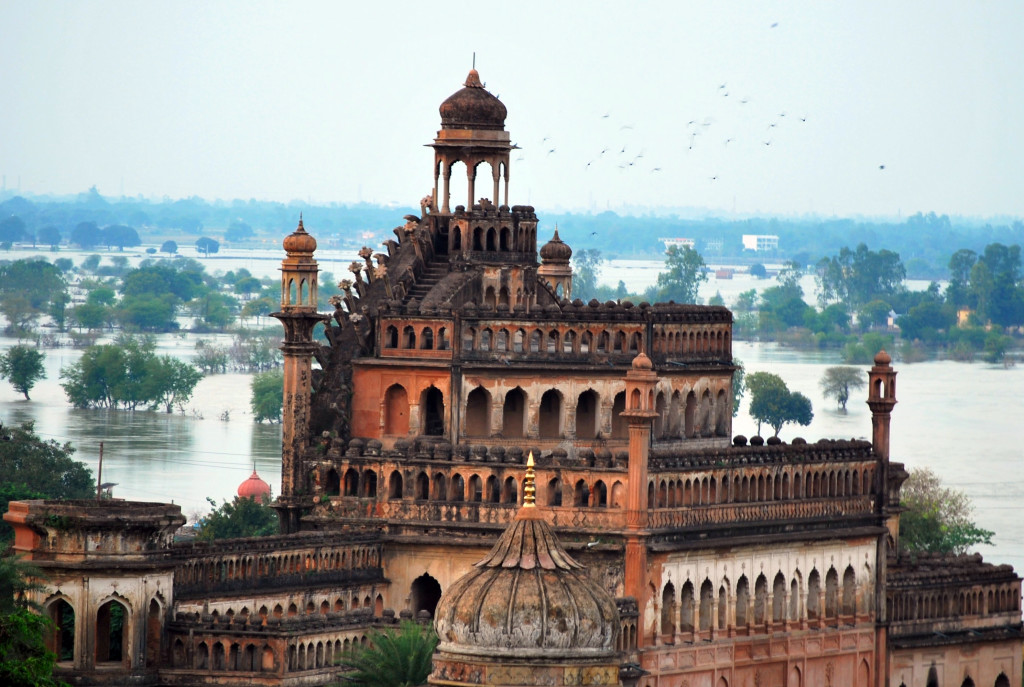
Image Courtesy: Google Images
Along with these architectures, there are several kind of filigree embroideries famous in Lucknow, but Chikankari is the most well known. It is famous across the world for its elegant features. Its Indian origin goes back to the days of Nurjahan, who brought the chikankari tradition from Persia to India. Chik is a Persian word which means ‘embroidery’ and Kari is a Sanskrit word that means ‘To Do’. There is a great influence of architectural patterns and motifs of chikankari clothes. There is a magical relation between architectures and textiles of Lucknow.
For example, the white on white nakkashi on the walls and white on white embroidery or, tint shaded embroidery on white cloth look similar to each other.
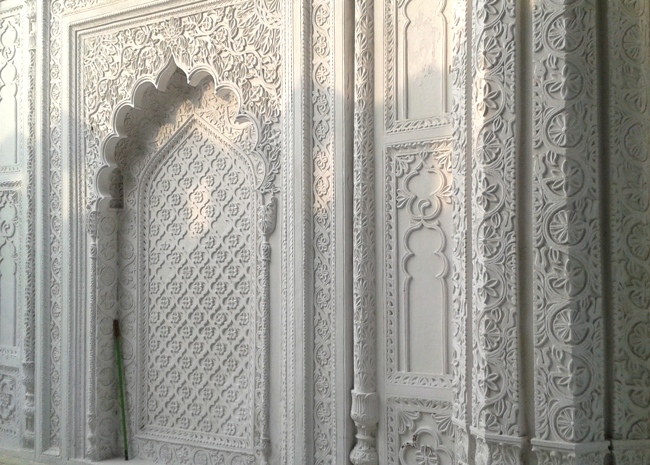
Nakkashi on the walls of Chhota Imambara, Lucknow
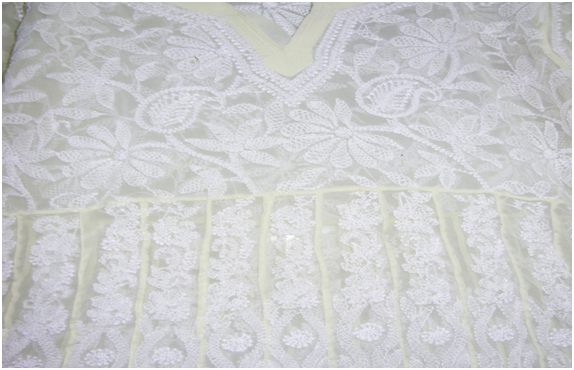
A typical Chikankari embroidery
Image Courtesy: Aditi Raman’s image stock
The shapes of tomb and chatris are similar to the neck patterns in chikankari dresses.
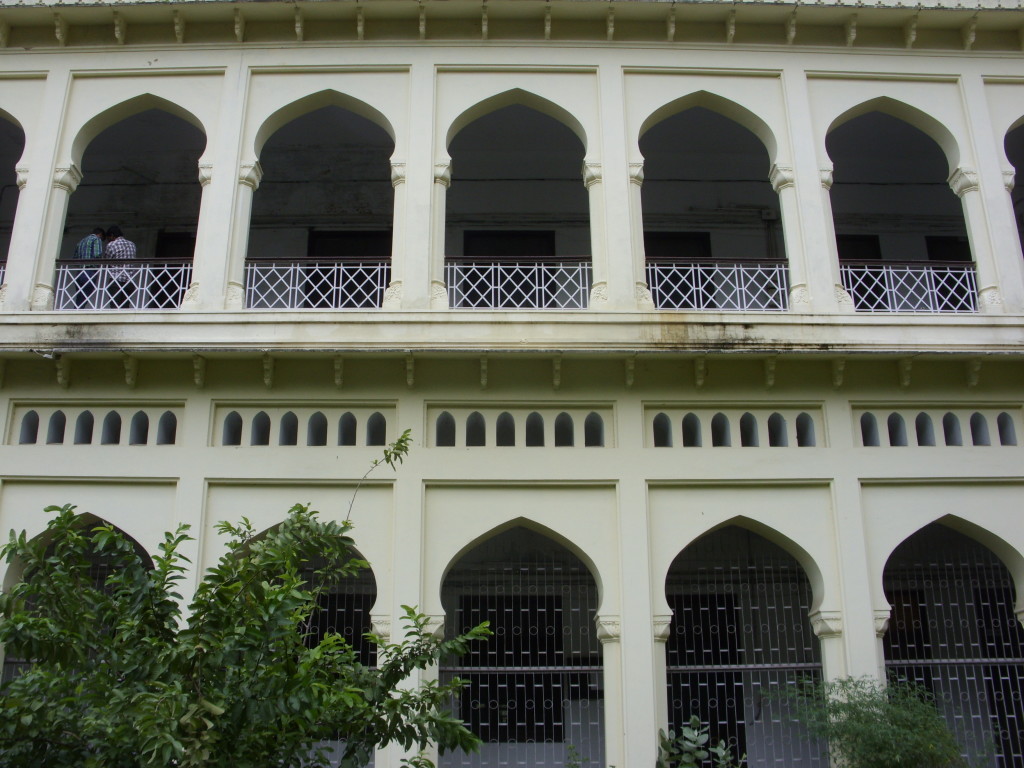
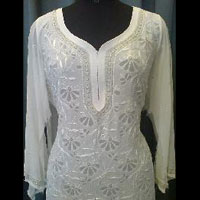
Image Courtesy: Aditi Raman’s image stock
The karigars of Lucknow are doing same motifs somehow taken from these buildings in a new style and new material for different purpose. There are many current designs of chikankari which are taken from the framed traditional buildings.


Image Courtesy: Aditi Raman’s image stock
For example, the ‘Nakkasi’ and the ’Mihrab’ of the architecture are very close to chikankari Bel or border motifs. One may feel an embroidered cloth covering the wall while looking at the outside view of architecture.
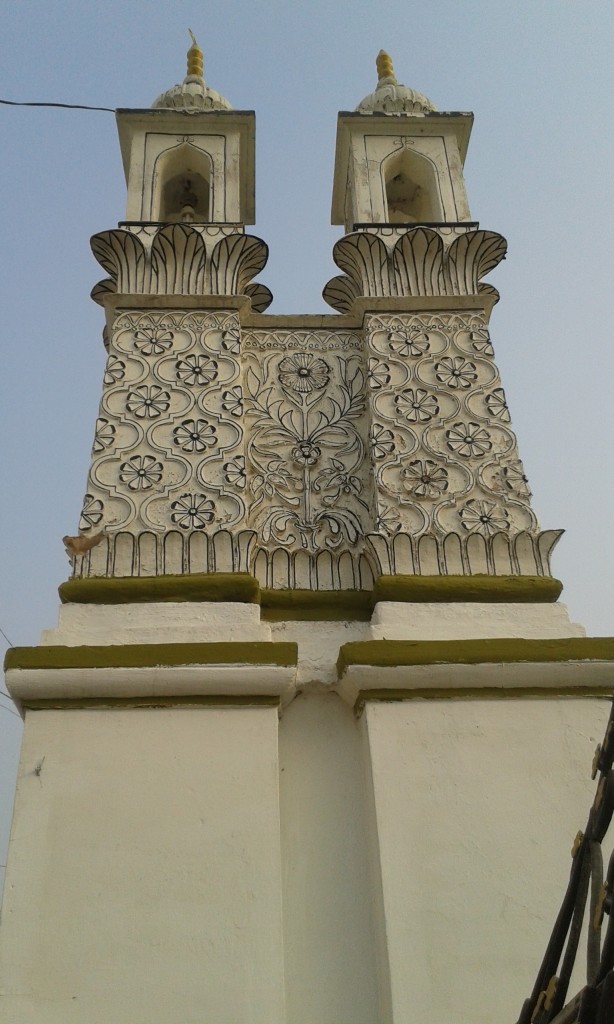
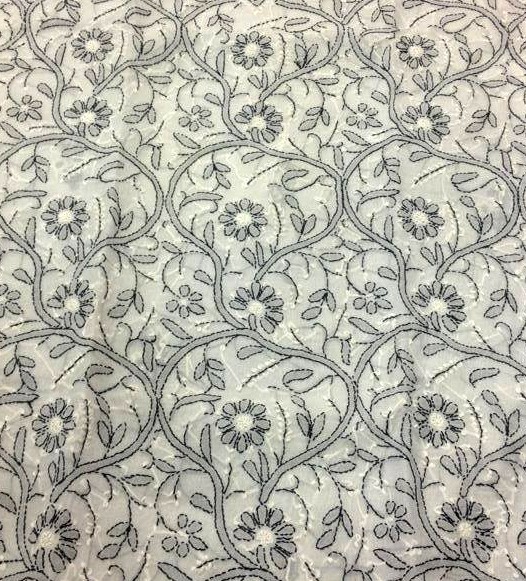
The floral patterns on the architecture and embroidered cloth
Image Courtesy: Aditi Raman’s image stock
For instance, Jaali stitch looks like the Jharokha of the monuments. My interest and involvement are taken over by the following points to find the relational context between architecture and textiles:
1. The reflection of light in architectures and its idea in embroidery.
2. The relation between Jaali stitch of Chikankari and the Jharokha of the architectures.
3. The similarities between the shape of the dome and arches with patterns of embroidered garments.
There are countless number of designs, ornamentations, motifs and color combination we can see in both architectures and chikankari fabrics of Lucknow.
The basic theme however remains same in both cases that design flows on the surface with a rhythmic movement to give the impression that carries this movement to infinity. These monuments have served as constant learning areas for us until now and they shall continue to remain interesting and inspiring to us in future as well.

